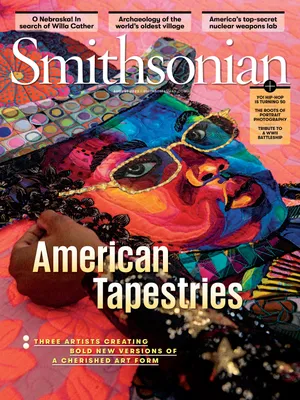A few minutes past midnight on July 30, 1945, two Japanese torpedoes struck the 10,000-ton USS Indianapolis. In just over ten minutes, it went under. For more than three days, sailors battled shark attacks, dehydration and salt poisoning. Only 316 of 1,196 crewmen survived.
When JD Smith finished his drawing of the Indianapolis, in 2019, he took a drive past a burial ground for veterans in Los Angeles and wept thinking about those who had died on the ship.
“When I feel I’ve captured the ship and its essence … enough for the crew of that ship to say, ‘OK, this representation is our ship,’ that’s when I get the tears,” he says.
Over the past 15 years, Smith has dedicated himself to creating some of the world’s most intricate and evocative renderings of warships that fought in the Pacific theater in World War II. Smith comes from a long line of veterans and served in the Navy himself as a boiler room technician on an amphibious assault ship from 1981 to 1984. He’s a self-taught artist, so skilled a draftsman that he can still replicate the diagram of the engine room of the vessel where he served. A pipe fitter by day and historian by night, he employs pen, pencil and collage. Growing up in the Venice neighborhood of Los Angeles, he spent much of his childhood on the San Pedro and Wilmington docks with his grandfather, who worked as a hydrostatic welder repairing warships during World War II. A cousin of Smith’s stepdad was one of the young sailors who died aboard the USS Astoria at the Battle of Savo Island in 1942. Hearing that story prompted Smith’s obsession with naval tragedies, and every ship he has depicted since has been an act of commemoration.
“These men didn’t have gravestones—they got coordinates,” Smith says. Whether he’s recreating a Japanese or a U.S. ship, Smith’s attention to detail is an homage to the men who walked those decks, ate in those mess halls and slept in those bunks. Smith pores over reference materials—blueprints, photos and first-person accounts—to immerse himself in a ship’s structure and role in the war. He considers every element of the ship’s composition, down to its position in the water on a given day or the angle of a shadow. Among the other vessels he has drawn are the USS North Carolina, the USS Essex, the IJN Musashi, the IJN Nagato and the IJN Kaga.
Though he works largely outside the public eye, his first solo show, “Unforgotten,” is currently on view at the Alfa Romeo Tango gallery at the Battleship USS Iowa Museum in Los Angeles.
For Smith, the Indianapolis is particularly emblematic of the horrors of war: Four days before encountering that Japanese missile, the crew had unknowingly delivered the internal components for the atomic bomb that would destroy Hiroshima and kill between 70,000 and 140,000 civilians.
“I draw the ships without any bias,” Smith says. “Japanese casualties were more numerous, almost every time. Death is pretty final. We’re all the same in that sense.”
/https://tf-cmsv2-smithsonianmag-media.s3.amazonaws.com/filer_public/82/40/824020f5-4e20-40bc-977e-9ae3ee6f847d/julaug2023_d01_battleshipartist.jpg)
:focal(960x549:961x550)/https://tf-cmsv2-smithsonianmag-media.s3.amazonaws.com/filer_public/8a/c9/8ac94cba-71f3-4590-8abc-1d55ee0fd3b9/battleship1.jpg)
